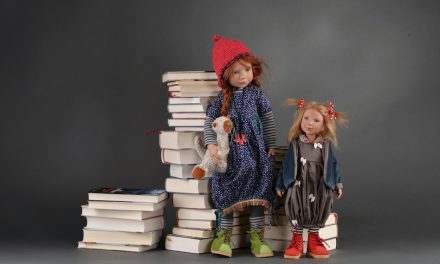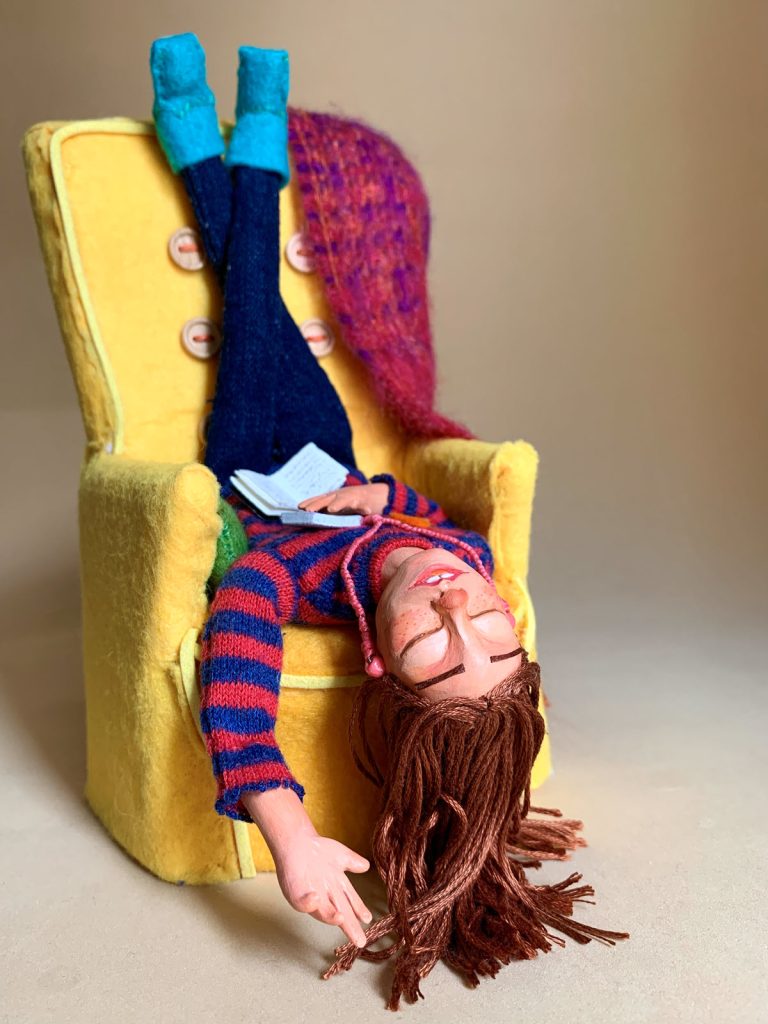
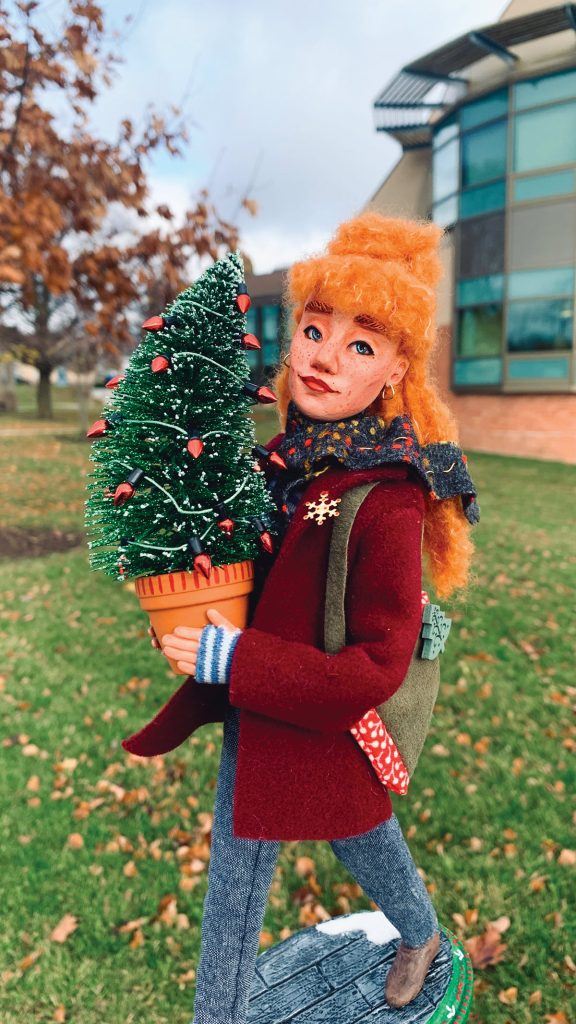
By Hannah Kelley
İrem Nur Terzi, a Turkish artist now living in Toronto, Canada, has successfully accomplished what long-time dollmakers — and artists in general — ultimately hope to achieve: a signature style. When looking at a sea of dolls, it’s easy to spot the unique facial features, clothing, and pops of color that are telltale signs of her work.
Terzi’s interest in all things miniature began in childhood, when she played with Barbie and Sindy dolls and their accompanying furniture, clothing, and accessories. “I even tried to make clothes for my dolls using modeling clay, experimenting with designs and textures,” she said. Nurturing her growing mind, Terzi’s father built her a two-story wooden dollhouse, which she decorated herself. She said, “That dollhouse, and the process of filling it with miniature items, sparked a lifelong love for dollhouses and tiny objects.”
Hoping to earn a living in the arts, Terzi studied stage and costume design at Istanbul’s Mimar Sinan Fine Arts University. There, she learned about the tools and techniques that helped further her artistic endeavors. In 2013, during her final year at university, she began crafting dolls. “For my graduation project, I created a short stop-motion animation film, which involved making the puppets and sets myself,” she said. “Interestingly, the size of the puppets I created for the film is very similar to the dolls I make today. After completing that project, I fell in love with the miniature world and the process of creating small-scale characters, which led me to continue working in this scale.”
Terzi said, “Before pursuing dollmaking as a full-time career, I worked in set design and stop-motion animation, where I honed my skills in crafting detailed miniatures and character design. These experiences greatly influenced my current work, as I now combine storytelling, craftsmanship, and intricate design in each of my creations.” Initially, sculpting was a struggle, but nowadays, she considers it one of her strongest skills and looks forward to shaping the little faces, as well as sewing the costumes that tie subtle and eye-catching details together.
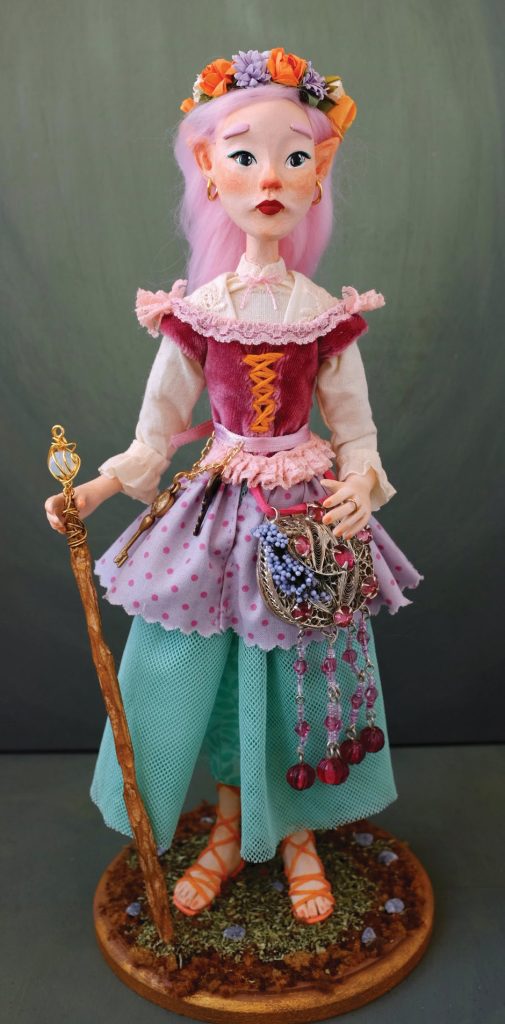
The opening of her doll business, People of Clay, was inevitable. Its name incorporates Terzi’s medium of choice and the humanness she etches into her dolls, which she described as “one-of-a-kind, handcrafted figures that bring imaginary characters to life. Each doll is carefully sculpted from polymer clay, hand-painted to capture intricate details, and dressed in handmade outfits that reflect their unique personalities. They are not just decorative pieces but storytellers, embodying whimsical, otherworldly traits that spark curiosity and imagination.”
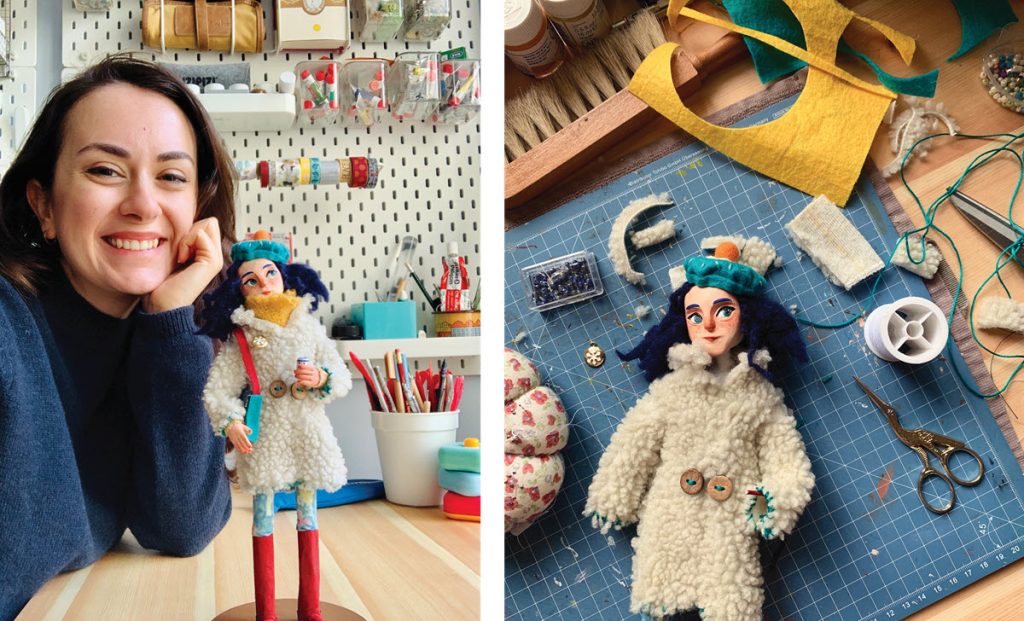
Moving to Canada has understandably impacted Terzi creatively and professionally. “It’s been a journey of adapting to a new culture, market, and audience,” she said. “As an artist, I’ve had to explore new sources of inspiration and connect with a different community, which has broadened my perspective and influenced my creations in unexpected ways. As a business owner, adjusting to international shipping logistics, new material suppliers, and local platforms has been both challenging and rewarding.” In addition, Terzi doesn’t only work as a dollmaker these days; she also paints board game figures for a studio and holds workshops and private lessons on dollmaking and character modeling.
Fortunately, her cozy personal studio provides an organized area to concentrate on her art. She said, “It’s filled with all the materials I need — clay, paints, fabrics, and tools. I also have shelves displaying my previous works and some of my favorite collectibles, which inspire me daily. It’s a space where I feel focused and motivated to bring my ideas to life.”
Positive feedback from her family, partner, friends, and followers on social media has been invaluable, and Terzi is proud of how far she has come. She said, “Knowing that my dolls tell stories and bring joy to others keeps me motivated. Moving forward, I hope to continue creating pieces that inspire and connect with people on a deeper level while reaching even broader audiences.” For fledgling dollmakers, she offered some words of advice: “It’s important to be patient with the learning process and allow yourself to make mistakes, as that’s how growth happens. I’d suggest practicing different techniques, whether it’s sculpting, sewing, or painting, and finding your own unique style over time. Most importantly, stay passionate and curious, because dollmaking is an art that requires both creativity and dedication. Keep experimenting, and don’t be afraid to try new things!”
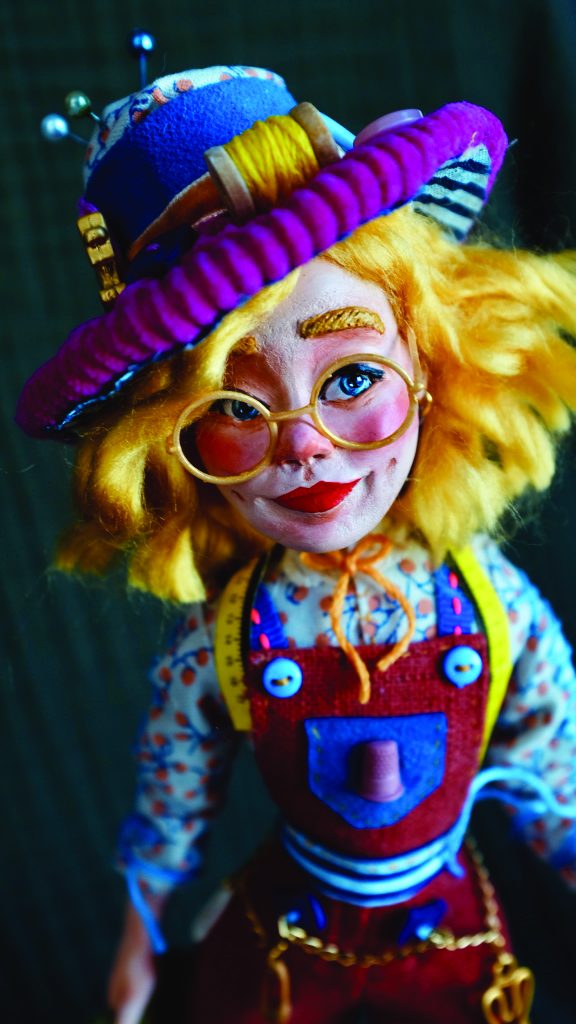
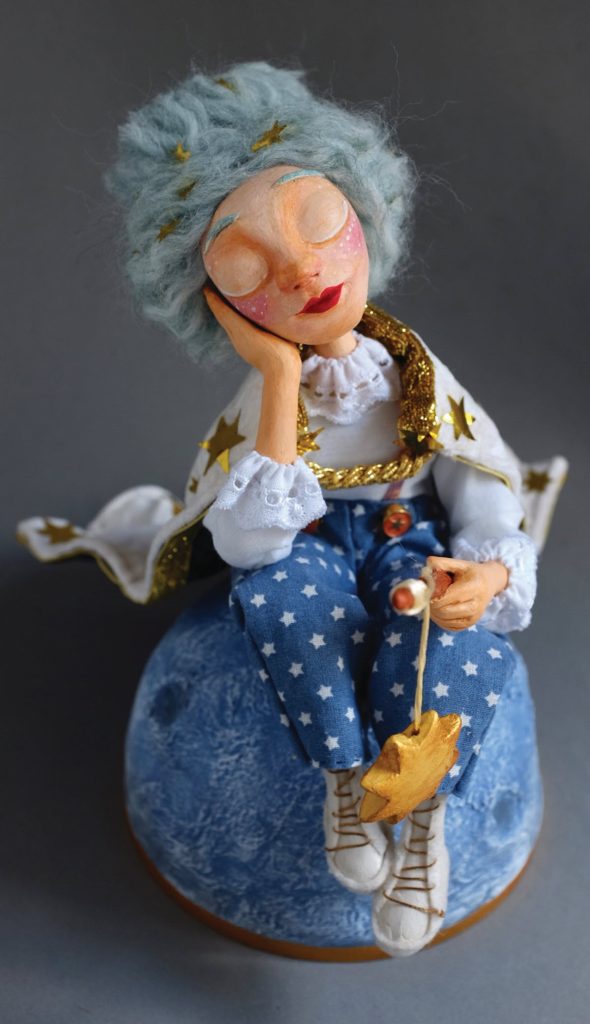
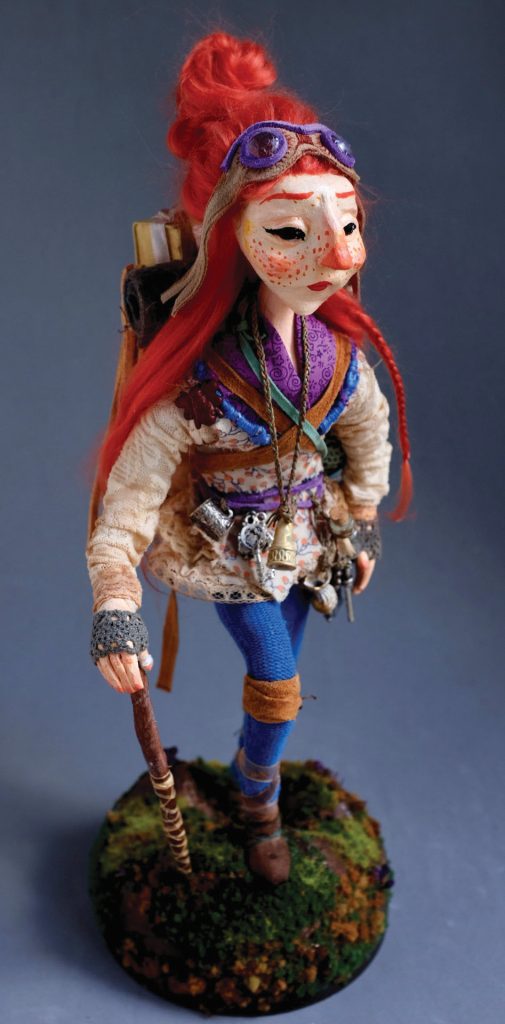
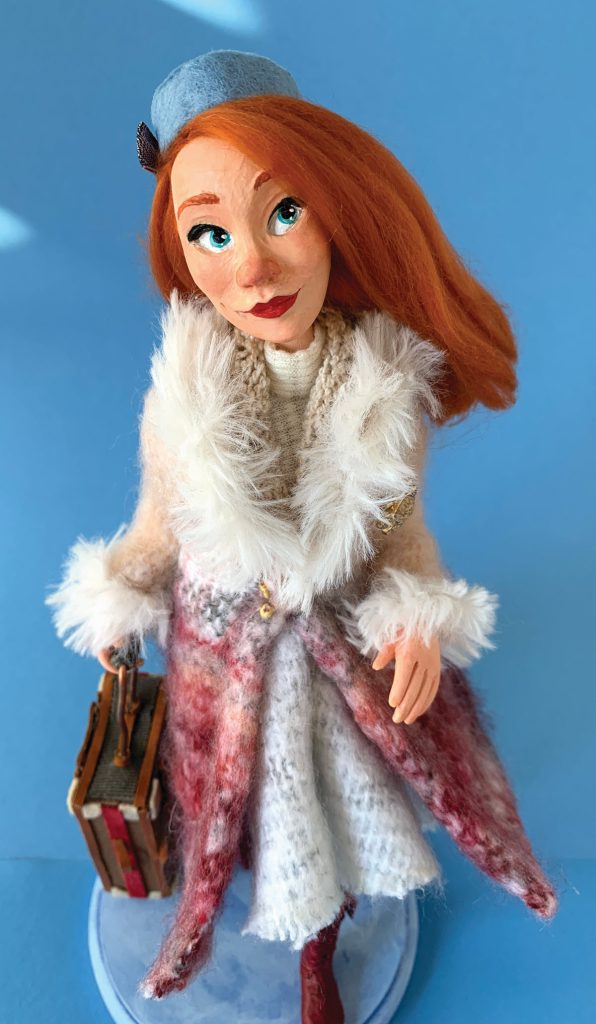
Those who have a concept in mind but are too hesitant to try their hand at dollmaking can still be part of the process through commissions. With Terzi, it’s a collaborative experience at every step. She said, “At the beginning of the process, I listen to the client’s ideas and, if the doll is based on a person or fictional character, I request reference photos. I also take note of specific details the client wants, such as colors, clothing, hairstyle, or accessories. During the making process, I share progress photos with the client at certain stages to get their approval or make adjustments if needed.”
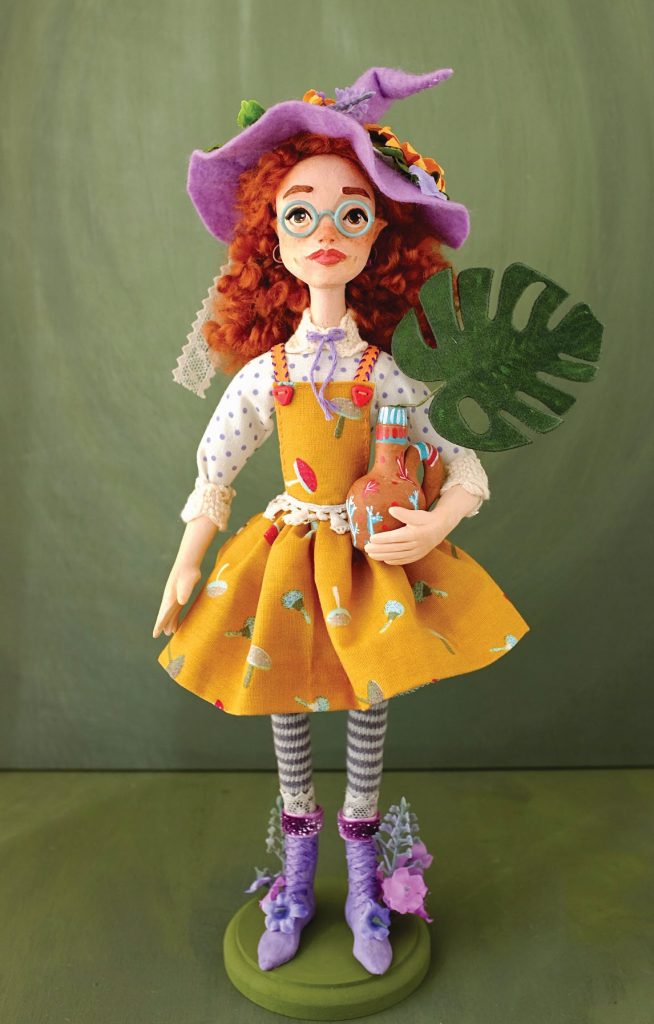

The work of others, be it a TV show, movie, painting, or literature, often inspires fresh ideas. So, even when Terzi is not actively making something by hand, her doll designs and related backstories are constantly in development. Going forward, she intends to continue making the types of dolls fans have come to know and love, but she also wants to challenge herself. One theme that has been on her mind for the future is dolls inspired by animals and their world. This could go a multitude of different directions, but based on past dolls, her spirited aesthetic will undoubtedly shine through.
Averaging one new doll per month, Terzi said, “Each doll I create is a reflection of my passion for storytelling and my love for crafting in miniature. Every character has its own journey and personality, which I hope resonates with those who encounter them. My work is deeply inspired by both the whimsical and the real aspects of life, and I believe that art has the power to connect people, tell stories, and evoke emotions. I’m truly grateful for the support of my collectors and fans, and I look forward to continuing to share my creations with you.”
People of Clay Art Dolls



